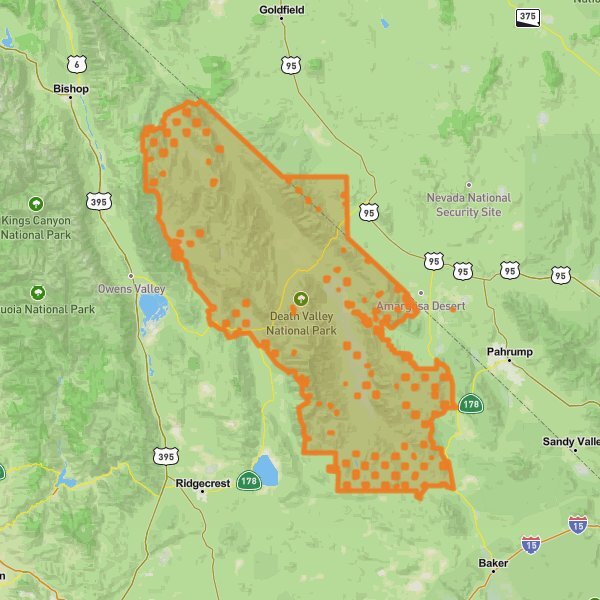1 of 163 parks in United States of America · Number of Hiking trails: 62 · 21,207.7 km²
Death Valley National Park is located in eastern California and Nevada, USA, within the Mojave Desert. It is the largest national park in the contiguous United States, famous for its extreme conditions, including some of the hottest temperatures on Earth. The closest towns are Furnace Creek and Stovepipe Wells, both within the park, with larger towns like Beatty, Nevada, and Pahrump, Nevada, nearby. The park was established as a national monument in 1933 and designated a national park on October 31, 1994. Historically, Death Valley was the site of mining operations during the 19th century, with several ghost towns and remnants of mining activity still visible today. Parking facilities are available throughout the park at visitor centers, trailheads, and campgrounds. Key parking areas include Furnace Creek Visitor Center, Badwater Basin, Zabriskie Point, and Dante’s View. Most parking areas are free, though there is an entrance fee to the park of $30 per vehicle, valid for seven days. The wildlife in Death Valley includes unique and adapted species such as the desert bighorn sheep, kit foxes, and kangaroo rats. Despite the harsh climate, bird species such as roadrunners and ravens are also common. Reptiles like sidewinder rattlesnakes and chuckwallas inhabit the park as well. The flora in the park is dominated by desert-adapted plants such as creosote bush, mesquite, and saltbush. In the higher elevations, Joshua trees and pinyon pines can be found. Occasionally, after rare rainfalls, the park experiences wildflower blooms that transform the desert landscape into a vivid display of color. Notable features of the park include Badwater Basin, the lowest point in North America, and Telescope Peak, the park’s highest point. Visitors can also explore the Mesquite Flat Sand Dunes, Artist's Palette, and the Racetrack Playa. Public transportation to Death Valley is limited, so most visitors arrive by car. Shuttle services and guided tours are available from nearby cities.
Read more
Parking: Available
Total spaces:
Opening hours:

There are public restrooms available in Death Valley National Park

